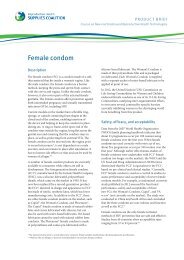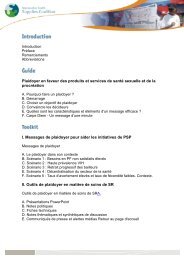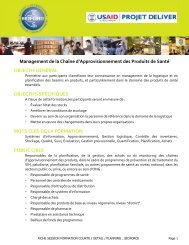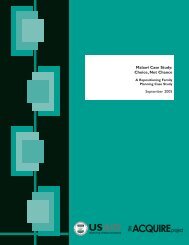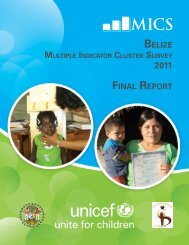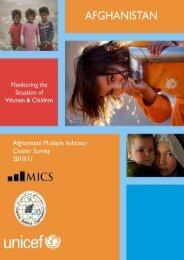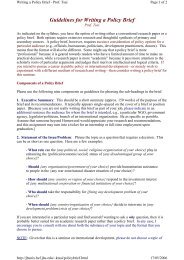Zambia Case Study: Ready for Change - Reproductive Health ...
Zambia Case Study: Ready for Change - Reproductive Health ...
Zambia Case Study: Ready for Change - Reproductive Health ...
You also want an ePaper? Increase the reach of your titles
YUMPU automatically turns print PDFs into web optimized ePapers that Google loves.
Rather than imposing family planning or other programs, it is essential to respond to the<br />
community’s expressed needs: “Projects fail when you dictate—it is better to ask the<br />
people.” One respondent told a story that illustrates this point. When working with the<br />
Flying Doctors in the mid-1980s, they encountered a great deal of resistance from the<br />
community when family planning was brought up. The community said that they were<br />
concerned about malnutrition among their children, and so the program attempted to<br />
integrate family planning with something that addressed the community’s needs. They<br />
began a deworming program, which showed immediate and tangible results: “This<br />
changed the face of the project. The community said, ‘These people helped us. We saw<br />
the worms. We can listen to them.’” Similarly, on the chief’s tours, they would not only<br />
talk about family planning, but also about water and other needs.<br />
Adolescent reproductive health<br />
<strong>Zambia</strong> has a young population, with almost half (46%) of its 10.9 million people<br />
younger than 15. As a result, improving the provision of reproductive health in<strong>for</strong>mation<br />
and services to young people has been given increased attention. Similar to general<br />
family planning ef<strong>for</strong>ts, a review of youth programs found that although activities were<br />
ongoing in all seven provinces, the most concentrated ef<strong>for</strong>ts <strong>for</strong> young people took place<br />
in Lusaka Province (particularly Lusaka Urban District and Kafue District) and the<br />
Southern and Copperbelt Provinces (FOCUS on Young Adults, 1999).<br />
Group discussions with community volunteers in Copperbelt Province:<br />
“We have the heart <strong>for</strong> the people”<br />
What have been the benefits of family planning?<br />
• Spacing children improves health of women and children; “Now we don’t have children dying of<br />
malnutrition.”<br />
• “Most people have realized that family planning is important <strong>for</strong> their families.”<br />
• Previously, “children were being laid like eggs, with no planning <strong>for</strong> them. When family planning came to<br />
us, we found it very helpful. Now we can manage to take our kids to school.”<br />
• Women have time to do other things<br />
• Improved relationships between husbands and wives; “marriages are more stable because couples have<br />
time <strong>for</strong> each other.”<br />
• “Family planning is bringing development not only with the family but at the national level. If they have<br />
three or four children rather than ten then they can educate them and bring development to the family and<br />
the nation.”<br />
What is their motivation?<br />
• Helping people in the community<br />
• They were given a lot of in<strong>for</strong>mation which their friends don’t know and so they need to share this<br />
in<strong>for</strong>mation<br />
• They would like to be given something in appreciation of their hard work, in particular bicycles<br />
because they are covering long distances on foot<br />
Interventions have included setting up youth-friendly corners in health facilities, working<br />
with peer educators, and offering family life education in schools. While some<br />
respondents felt that the youth-friendly corners had led to increased utilization of<br />
18 Repositioning family planning—<strong>Zambia</strong> case study The ACQUIRE Project



